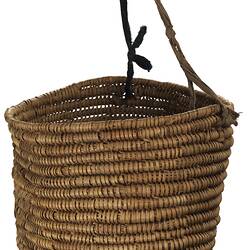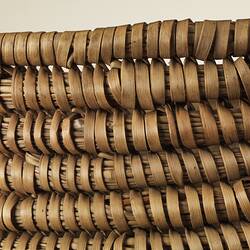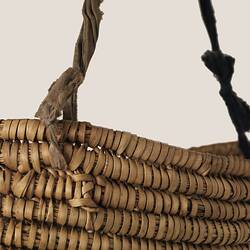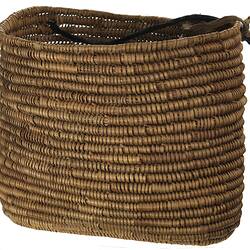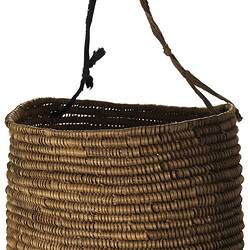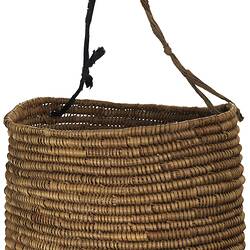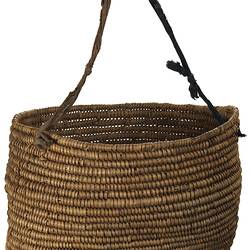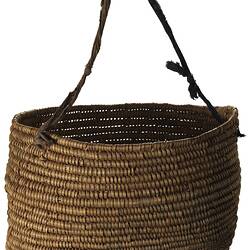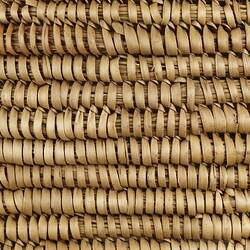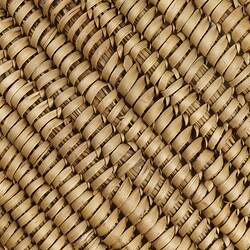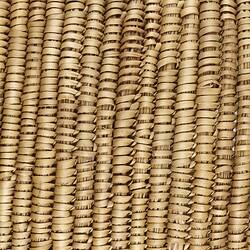Summary
This basket came from the Mortlake area of the Western District of Victoria. The Girai Wurrung people are the traditional owners of the land south-east of Lake Bolac, including Mortlake and Mt Hamilton.
Made from poong'ort (sedge grass), this basket was constructed using the traditional bundle-coil technique, prevalent in this region of south-eastern Australia. Coiling was used by Indigenous people living along the Murray and Yarra Rivers for thousands of years prior to European arrival. Women would have worn this basket slung over their backs as they went about their daily work. It would have been used for collecting and storing many things, including food such as murnong (yam daisies).
This basket has a handle made from European fabric. Pre-contact, the handles would have been made from flexible fibres such as stringybark or cumbungie. During mission times, women made baskets such as this to sell through local stores, they were also sought after by the station owners' wives.
Physical Description
Coiled basket made using the bundle-coil technique.
Significance
Yorta Yorta/Wemba Wemba and Wergaia artist and researcher Alana Garwood-Houng has studied Aboriginal basket-making extensively and illuminates the adaptation of baskets that can be seen in this basket, which includes the addition of European fabric for the handles;
'With the arrival of Europeans, life for the people of the rivers and the land changed for ever and this was reflected in baskets design. Government Reserves and religious mission stations were where many of the people eventually lived. Managers of some of the missions or government reserves encouraged the making of items for sale including coiled baskets, for this meant that the people were industrious and not idle. It also meant that the people were able to make money for themselves, especially the women and they often made more money than the men. However, the old style of coiled baskets was not profitable so the makers changed the style of baskets to fit the needs of the Europeans who bought them. The makers of coil baskets were able to adjust what was a traditional cultural practice to what became tourist commodities. These adjustments meant a number of changes to baskets and the creation of newer shapes. One of the biggest changes in the design of baskets was the handles. Handles were no longer made of string and knotted onto the basket but were also coiled and were either incorporated into the basket or made separately and stitched onto the basket. Handles were smaller and made to be carried by hand, rather than for example in the old style over the shoulder.'
Reference: http://aiatsis.gov.au/gallery/video/baskets-hold-history
More Information
-
Object/Medium
Basket
-
Maker
-
Locality
-
Date Produced
-
Object Measurements
360 mm (Length), 275 mm (Width), 255 mm (Height)
-
Classification
-
Date Made
-
Maker
-
Clan/Language Group
-
Place Made
-
Indigenous Region
-
Keywords
-
Type of item
-
Discipline
-
Category
-
Collecting Areas

